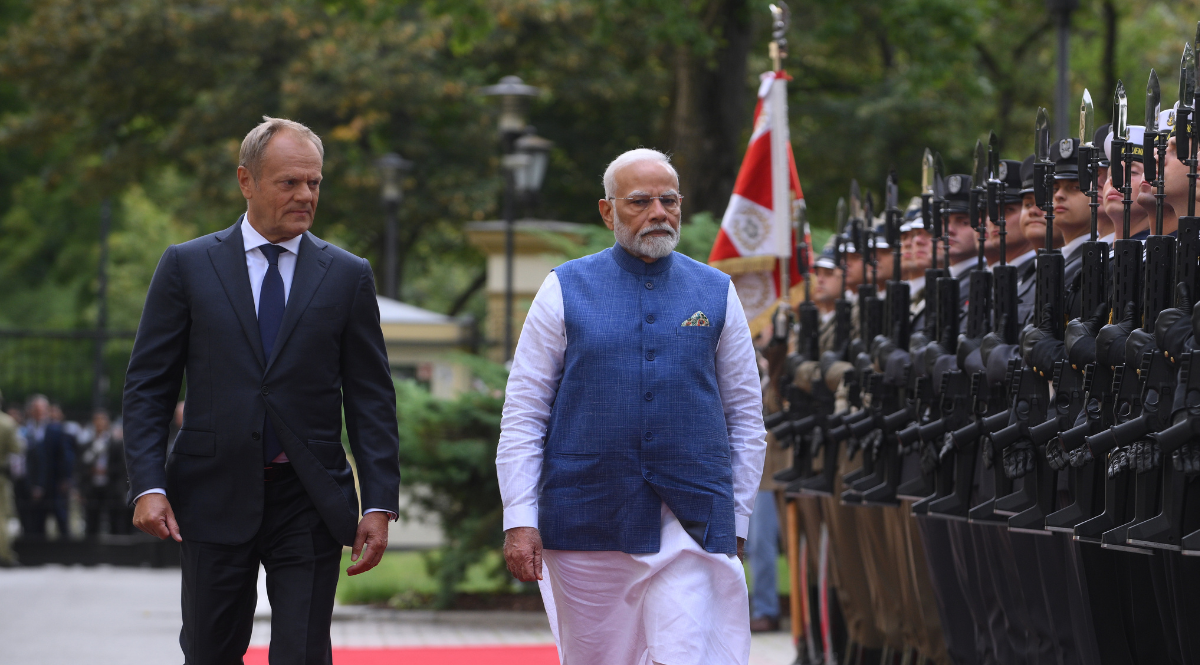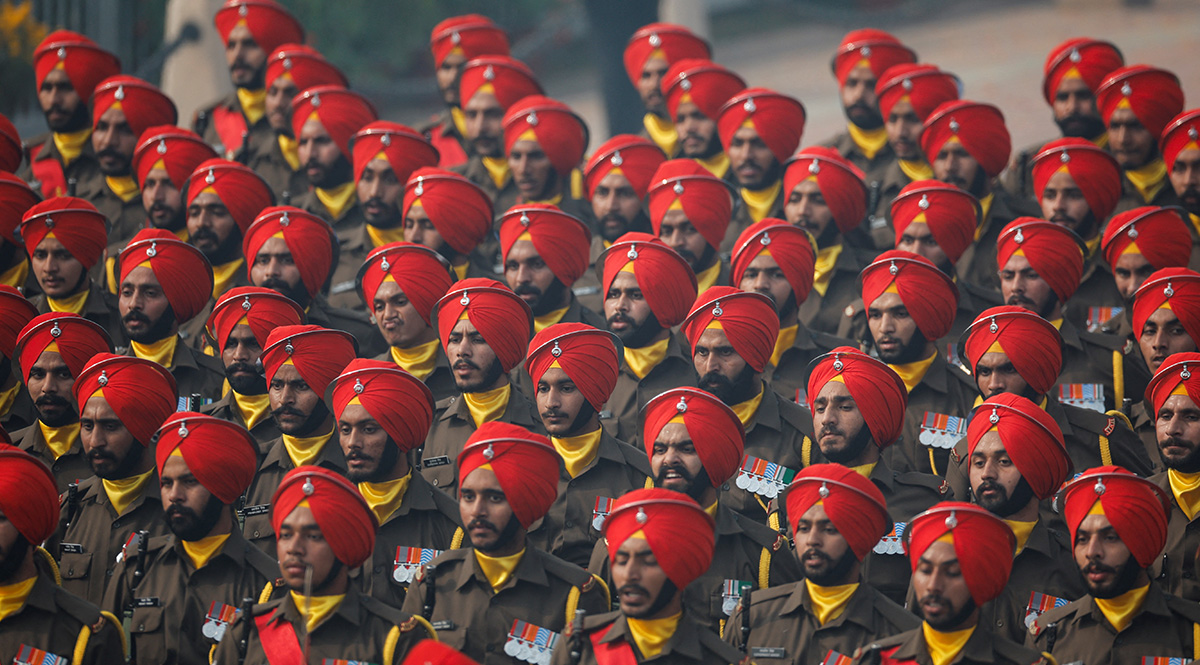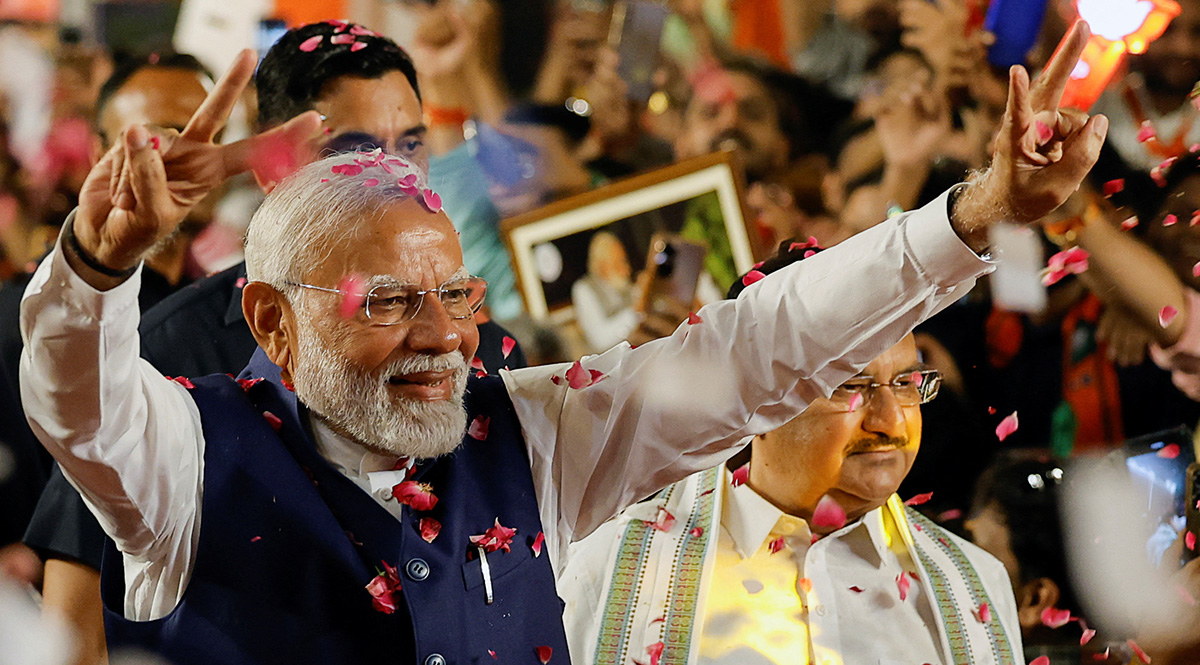Modi's Visit to Poland, Ukraine Strengthens Relations with Central Europe, the EU
Indian Prime Minister Narendra Modi’s historic visits to Warsaw and Kyiv have opened a new stage in bilateral relations but also have strengthened India’s partnership with the European Union. The increasing trust in relations with Ukraine also gives India a chance to play a significant role in the Ukrainian-Russian peace process. To fully enjoy the new opportunities in Polish-Indian relations, it is worth maintaining the dynamics of contacts at the highest level, filling the strategic partnership with content, supporting economic cooperation, and seeing the possibilities in Poland’s role in the European Union and the Three Seas Initiative.
 Adam Chelstowski / Forum
Adam Chelstowski / Forum
Outcomes of Modi’s Visit to Poland
The Indian prime minister paid an official visit to Poland on 21–22 August. The first visit by the head of an Indian government in 45 years took place on the 70th anniversary of the establishment of Polish-Indian diplomatic relations and had a mainly symbolic, but also political dimension. A large part of the programme was devoted to gestures emphasising shared history, including laying wreaths at the monument of the “Good Maharaja” (an Indian aristocrat who hosted several hundred Polish refugee children taken with Anders’ army from the USSR during World War II), the Battle of Monte Cassino (in which Polish and Indian soldiers fought), and the Grave of the Unknown Soldier. There were also meetings with the Indian diaspora in Poland (23,000 people in 2024 and still growing). Key events were meetings between Prime Minister Modi and Polish Prime Minister Donald Tusk and President Andrzej Duda.
The main effect of the visit is the elevation of relations to the level of a “strategic partnership” and the adoption of a five-year cooperation plan. The parties committed themselves to regular contacts between the foreign ministers and annual consultations at the level of deputy ministers and the resumption of the work of the Joint Working Group on Defence and the Joint Economic Commission in 2024. The leaders announced their efforts to balance trade (currently, exports from India are three times greater than from Poland) and to develop cooperation, including in the areas of defence, mining, clean energy, and connectivity. Tusk expressed his hope that India would play a positive role in ending the war in Ukraine. In a joint declaration, the prime ministers recognised the “need for a comprehensive, just, and lasting peace in accordance with international law […] and respecting the sovereignty and territorial integrity” of Ukraine.
Poland’s Strategic Partnership with India
Polish-Indian relations, long limited to economic cooperation, are gaining an additional political and strategic dimension. The elevation of the status of relations indicates the political will to strengthen cooperation, despite differences in the approach to the war in Ukraine and India’s close relations with Russia. Poland is India’s 10th strategic partner in Europe (eighth in the EU), and India is Poland’s fourth in Asia (along with China, Japan, and South Korea). This means an appreciation of the importance of Central Europe in Indian foreign policy and recognition of Poland’s leading role in this part of the world. Unblocking contacts at the highest level and announcements of a regular political dialogue would enable consultation on positions on key international issues, such as the war in Ukraine, the fight against terrorism, and the situation in the Indo-Pacific in the context of the U.S.-China rivalry.
Modi’s visit and Poland’s unprecedented presence in the Indian media are positive signals that increase the latter’s recognition in India, which may facilitate, among others, economic cooperation, the potential of which has yet to be reached. With an exchange of $5.6 billion in 2023, Poland was only India’s 46th trading partner, while the world’s fifth-largest economy’s share in exports from Poland was only 0.47%, and in imports 1.07%. India, which is the fastest-growing large economy in the world (7.3% GDP last year) and offers a huge consumer market, presents itself as an alternative economic partner to China and a safer place to locate investments and is counting on closer cooperation in innovative sectors such as renewable energy sources, IT, and space exploration.
The Visit to Kyiv
From Poland, Prime Minister Modi travelled by train to Ukraine, the first-ever visit by an Indian head of government to that country. During his several-hour stay in Kyiv on 23 August (National Flag Day), he met with President Volodymyr Zelensky, visited an exhibition dedicated to children killed by Russia during the ongoing war, and presented medical aid. He also laid flowers at the monument to Mahatma Gandhi and met with the Indian diaspora. Both sides signed four agreements (on cultural cooperation, in the field of agriculture, healthcare, and development aid for Ukraine) and a joint statement in which, among other things, they committed to work towards “establishing a strategic partnership”. The announcement of increased cooperation between the defence industries (including production in India) and Modi’s expression of interest on behalf of Indian companies in participating in the reconstruction of Ukraine are important.
Prime Minister Modi did not offer a change in position on the war and did not present a peace plan, but called for a search for peace through “dialogue and diplomacy”, assuring his readiness to support this process in every possible way. President Zelensky used the opportunity to present clear expectations towards India. During a meeting with Indian journalists after the visit, he urged it to stand with Ukraine and not to balance between the warring parties. He also noted that India could help end the war sooner if it stopped buying Russian oil. Finally, he proposed that India host the second peace summit on Ukraine, and announced his readiness to visit New Delhi soon.
International Significance of the Visits
Prime Minister Modi’s visits to Poland and Ukraine are primarily a diplomatic success for India. Without changing the traditional position of balancing between the parties and without condemning Russian aggression, it has managed to strengthen relations with Poland and Ukraine and consolidate its image as an honest broker in the search for peace, which was weakened by Modi’s July trip to Moscow. If India manages to bring about an international peace conference on Ukraine in the coming months, with the participation of Russia and the countries of the Global South, which were absent from the first summit in Switzerland in June, this will be an important step towards peace and one which will strengthen India’s position as an important global player and a bridge connecting the conflicting parties.
The visit to Poland also strengthens India’s partnership with the EU, especially with the countries of Central Europe. Until recently, this region played a marginal role in Indian policy (it was the first visit of an Indian prime minister to this part of the world since the end of the Cold War) and in India-EU economic cooperation. The 13 EU Member States of the region account for just 11% of EU trade with India (for comparison, China accounts for 15%). Greater Indian engagement in this area will help build a more balanced partnership with the EU and unlock untapped potential for economic, political, and connectivity cooperation between Europe and the Indo-Pacific.
Conclusions and the Way Forward
Taking advantage of the positive atmosphere and maintaining the momentum of Polish-Indian cooperation requires organising a visit of Poland’s prime minister or president to India in the coming months and filling the strategic partnership with content by preparing specific agreements and new initiatives and mechanisms of bilateral cooperation. It will be necessary to immediately appoint an ambassador of the Republic of Poland in New Delhi, a director of the Polish Institute there, restore the activities of the PAIH Foreign Office in Mumbai, and increase the staffing of consulates. In the near future, it is worth better preparing Polish companies to enter the Indian market by adjusting export support instruments and organising economic missions, among other things. The Polish side could consider a mutually beneficial solution in the field of regulated and controlled migration and mobility, which is one of the priorities for India, for example, by starting negotiations on an intergovernmental agreement in this area.
In the next step, Poland may consider re-inviting the prime minister of India to Poland on the occasion of the Three Seas Initiative summit in 2025 in order to strengthen cooperation in the field of connectivity between Central Europe and the EU and India and the Indo-Pacific. It is also worth considering how best to use the EU Council presidency in the first half of 2025 to increase Poland’s role in shaping EU-India relations and accelerate negotiations on a free trade agreement and investment protection. The Polish presidency happens at a time when the long-postponed EU-India summit (due to elections in India and the EU, among other things) may take place, which gives Poland the opportunity to play an important role in organising the EU-India Business Forum or other events accompanying the leaders’ meeting.





